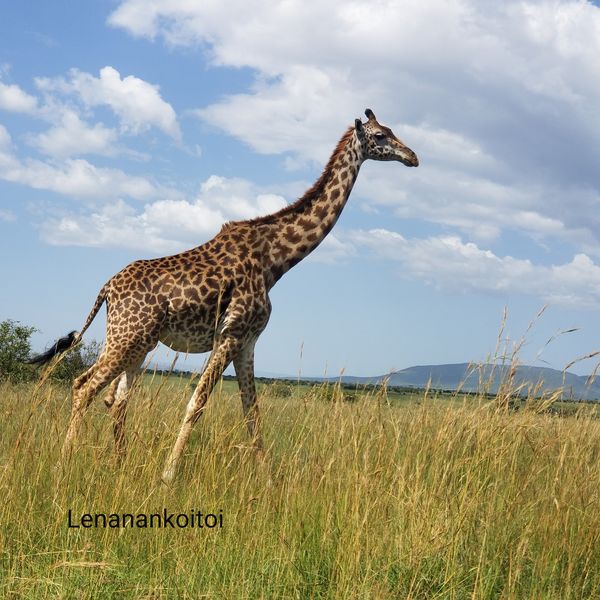Giraffes are the world’s tallest mammals. They are uniquely adapted to reach vegetation inaccessible to other herbivores. Unusually elastic blood vessels and uniquely adapted valves help offset the sudden buildup of blood (to prevent fainting) when giraffes’ heads are raised, lowered, or swung quickly. Their “horns” are actually knobs covered with skin and hair above the eyes that protect the head from injury. Their necks contain the same amount of vertebrae as we do (seven) except their bones are extremely elongated making their neck a long length of 2.4 meters.
COMMON NAME: Giraffe
SCIENTIFIC NAME: Giraffa camelopardalis
TYPE: Mammals
DIET: Herbivore
AVERAGE LIFE SPAN IN THE WILD: 25 years
SIZE: 14 to 19 feet
WEIGHT: 1,750 to 2,800 pounds
Gestation period: Northern giraffe: 15 months
Eats: Acacia
Species: G. camelopardalis
Family: Giraffidae
Class: Mammalia
Height: 5 – 5.9 m (Male, Adult), 4.3 – 5.2 m (Female, Adult)
Giraffes live in nonterritorial groups of up to 20. Home ranges are as small as 85 square km (33 square miles) in wetter areas but up to 1,500 square km (580 square miles) in dry regions. The animals are gregarious, a behaviour that apparently allows for increased vigilance against predators. They have excellent eyesight, and when one giraffe stares, for example, at a lion a kilometre away, the others look in that direction too. Giraffes live up to 26 years in the wild and slightly longer in captivity.
Giraffes prefer to eat new shoots and leaves, mainly from the thorny acacia tree. Cows in particular select high-energy low-fibre items. They are prodigious eaters, and a large male consumes about 65 kg (145 pounds) of food per day. The tongue and inside of the mouth are coated with tough tissue as protection. The giraffe grasps leaves with its prehensile lips or tongue and pulls them into the mouth. If the foliage is not thorny, the giraffe “combs” leaves from the stem by pulling it across the lower canine and incisor teeth. Giraffes obtain most water from their food, though in the dry season they drink at least every three days. They must spread the forelegs apart in order to reach the ground with the head.
Females first breed at four or five years of age. Gestation is 15 months, and, though most calves are born in dry months in some areas, births can take place in any month of the year. The single offspring is about 2 metres (6 feet) tall and weighs 100 kg (220 pounds). For a week the mother licks and nuzzles her calf in isolation while they learn each other’s scent. Thereafter, the calf joins a “nursery group” of similar-aged youngsters, while mothers forage at variable distances. If lions or hyenas attack, a mother sometimes stands over her calf, kicking at the predators with front and back legs. Cows have food and water requirements that may keep them away from the nursery group for hours at a time, and about half of very young calves are killed by lions and hyenas. Calves sample vegetation at three weeks but suckle for 18–22 months. Males join other bachelors when one to two years old, whereas daughters are likely to stay near the mother.

